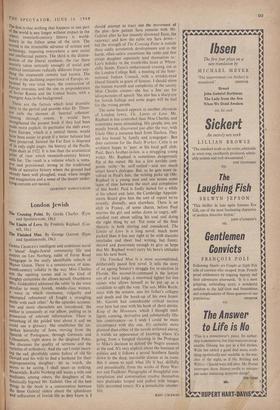World History
The. New Cambridge Modern History. Voltage XII: The Era of Violence, 1898-1945. Edited by David Thomson. (C.U.P., 37s. 6d.) THIS is a book we have all been waiting for. The need for an historical analysis of the vast changes which transformed the world and most of Or presuppositions- about the world in the half' century between 1900 and 1950 requires no emphasis; it is one of the major themes of Or times. Now, in twenty chapters by twenty-to° different authors, we are given the fullest account of these years that has yet appeared in the English language. It is going to be immenselY useful; but it is not quite the key to 'the envirou' ment of our times' which readers may expect. In the first place, the volume as a whole is de' cidedly unbalanced. There is no account of Soviet Russia after the death of Lenin in 1921' no history of Nazi Germany and of Hiders Europe, no study of international relations after 1933, no survey of the Second World War, no assessment of the vital wartime conferences whose outcome was so important for the future; If the general chapters on social, political and economic trends were substantial enough t° fill the gap, these omissions might not be s° serious. Unfortunately that is not the case. The, analysis of the changing structure of world economy by G. C. Allen provides an excellent opening piece; but the late Sir Robert Ensors account of the development of political instittl• Lions, which is (or should be) central to the whole design, is thin and weak. In the end it is left to the editor, Dr. David Thomson, to draw the volume together and give it what unity it pos' sesses. The introductory and concluding essays in which he attempts this task provide fascinat. ing glimpses of the world-wide connotations of the events narrated; but inevitably they are only glimpses. It is as though the complexity of modern civilisation is too great for historians to encompass it in a single view.
And yet in the end it is not difficult, if vie compare the world situation in 1900 and In 1950, to pick out a number of decisive factors.
The first is that nothing that happens in one part of the world is any longer without impact in the others; twentieth-century history is world- history in the fullest sense of the term. The second is the irresistible advance of science and technology, imposing everywhere a new social and intellectual pattern. The third is the disinte- gration of the liberal synthesis, the rise (here scarcely taken seriously enough) of social and Political institutions radically different from any- 91'4 the nineteenth century had known. The fourth is the declining importance of Europe, ex- hausted by two total wars, the contraction of Europe overseas, and the rise to preponderance of Soviet Russia and the United States, with a resurgent Asia in the background.
These are the factors which lend dramatic unity to the period and provide what Dr. Thom- 'On calls the element of 'internal cohesion. running through events. It would have Strengthened the present book if they had been made more explicit. In particular the shift away have Europe, which is a central theme, would 2ave been easier to grasp if a better balance had been preserved. Instead the Far East is disposed of in only eight pages, the history of the Pacific stops short in 1922. It is less than the ecumenical Point of view which twentieth-century history calls for. The result is a volume which is tenta- tive and provisional, strong in the traditional fields of narrative history where the ground had already been well ploughed, weak where insight and imagination and a sense of the deeper under- lying currents are needed.
GEOFFREY BARRACLOUGH











































 Previous page
Previous page